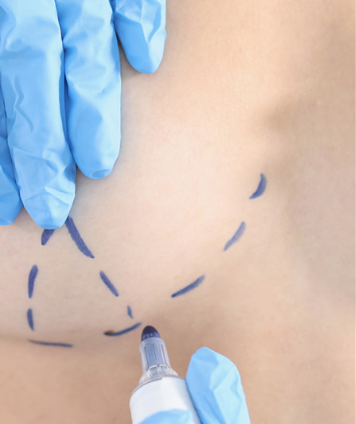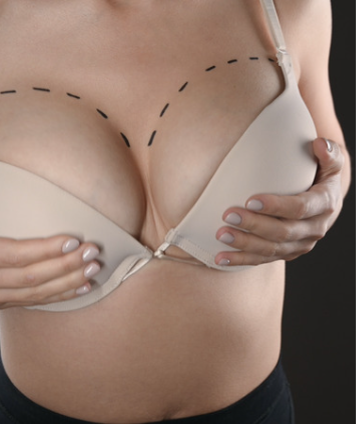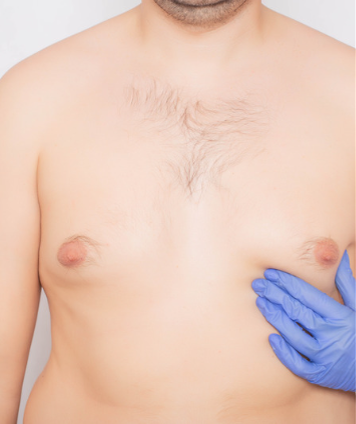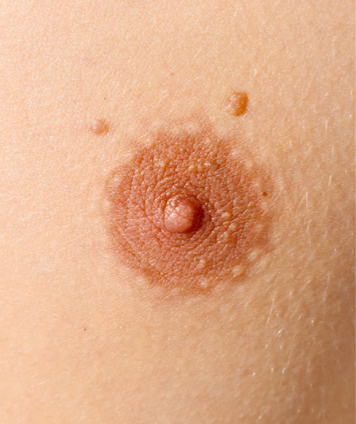Call Us - (+27) 21 531 4565

Cosmetic Surgery
Breast Procedures
Breasts symbolize everything feminine, glorious, sensuous, desirable, and sound. Breasts represent fertility, reproduction, and nurturing.
Breast augmentation procedures have been performed over 25 years on over 2.5 million women worldwide. Patients seek breast augmentation for various reasons, including improving self-esteem, achieving a more proportionate body contour, and a more youthful shape to their breasts.
Contact us to schedule your consultation today!
Contact UsBreast enlargement (augmentation)
When considering breast augmentation, you must understand that the result will depend primarily on your anatomy before the procedure. Your result will be influenced by the current shape of your breast, the anatomy of your chest, the quality of the skin, and the amount of existing breast tissue.
Expecting your breasts to look the same as your favorite celebrity's or your result to be the same as your friend's is unrealistic and will undoubtedly lead to disappointment.
Breasts symbolise everything feminine, glorious, sensuous, desirable, and sound.

Frequently Asked Questions
Am I a good candidate for this procedure?
You may be a candidate for breast implant surgery if:
- You are healthy.
- You have realistic expectations.
- Your breasts are fully developed.
- You feel that your breasts are too small.
- You are dissatisfied with your breast shape and volume due to pregnancy, weight loss or aging.
- You are unhappy with the upper part of your breast appearing empty.
- Your breasts are asymmetrical.
- One or both of your breasts failed to develop normally or have a tube-like shape.
When might breast implants need to be combined with another procedure?
Overly large, pendulous breasts with excess skin cannot necessarily be improved by placing breast implants alone and might have to be combined with a breast reduction or breast lift procedure.

Breast fat grafting
Using fat to improve breast size, correct breast irregularities, or address anatomical differences between breasts has become a routine surgical procedure for the experienced plastic surgeon.
Fat grafting to the breast can also be used to hide or enhance several deformities presenting after other breast procedures, such as loss of volume to the upper pole of the breast, the rippling of implants, minor contour deformities like dents, or enhancing the size of existing implants, without replacing the implants.
Frequently Asked Questions
Who should consider this procedure?
You could consider this procedure if:
- You would like to have a small to moderate breast enhancement and would prefer not to have implants.
- You present with slight to moderate breast asymmetry, which you want to be corrected.
What is this procedure unable to correct?
The following cannot be corrected/improved with this procedure:
- Signifi cant enhancements (more than one cup size).
- A breast lift, if you are experiencing sagging of both breasts.
Breast lift (mastopexy)
A mastopexy or breast lift can be performed to reshape and lift the breast, nipple and areola into a more youthful position. Women with too much breast volume can combine the procedure with a breast reduction. In contrast, those lacking volume can combine it with the placement of implants in a procedure known as augmentation mastopexy.
Mastopexy procedures must be tailored to each patient, depending on the exact concerns of the patient, the patient’s breast anatomy and the skin quality of the breast.
Weight loss, pregnancy, breastfeeding, and aging can leave a woman’s breasts without shape or contour.

Frequently Asked Questions
Who should consider this procedure?
You could consider this surgical procedure if:
- You would like to restore your breast shape after pregnancy, breastfeeding or weight loss.
- You would like to obtain a perkier breast shape than before.
Will this procedure correct my breast size?
A mastopexy procedure does not correct the size of your breasts – you would need to combine the procedure with either a reduction or an augmentation (enlargement).

Breast reduction (reduction mammaplasty)
Large breasts can cause both health and emotional problems. Physical discomfort, including a chronically painful neck, shoulders, and upper back, skin irritations, deep grooves on the shoulders from bra straps, and poor posture, can restrict a woman's ability to lead an active life. Huge breasts can make a woman, or a young girl, feel extremely self-conscious.
Breast reduction could relieve these problems by reducing the size of the breasts and making them more harmonious with the rest of the body.
Frequently Asked Questions
Who should consider this procedure?
Breast reduction surgery is not generally performed in young women whose breasts have not finished developing. However, surgery might be considered in extreme cases. Candidates must be mature enough to understand the procedure’s potential risks and complications.
Patients should be near or close to their ideal weight before undergoing breast reduction surgery. Weight loss or weight gain is apparent in the breast and will influence the result of surgery.
You could consider this surgical procedure if:
- Your breasts are too large in proportion to the rest of your body.
- Your breasts have different sizes (asymmetry).
- The size of your breasts limits your physical activity.
- The weight of your breasts causes back, neck and shoulder pain.
- Your bra straps cause indentations from supporting heavy, pendulous breasts.
Is there a non-surgical alternative?
No reliable non-surgical means of breast reduction is possible. Alternate procedures, such as liposuction alone, can sometimes be used if the breasts are not too big and only fat needs to be removed. However, this can result in breasts that sag and have loose skin. A mastopexy, or breast lift, will then have to be performed.
Lifestyle changes, such as weight loss, weight gain, pregnancy and hormonal changes impact breast size. Proper professional fitting of a bra can assist patients in reducing the physical discomfort associated with large breasts and improve their appearance.
How long will my results last?
A breast reduction will last a lifetime. However, pregnancies and profound changes in weight can impact the results of this surgery. In addition, as you age, the breasts will naturally lose elasticity and start to sag.
Corrective breast procedures
Patients sometimes have differently shaped breasts, tuberous breasts, and other deformities.
Like the rest of our bodies, breasts change shape and form as we age, so the results of previous breast surgery might not remain the same and require surgical correction.
Breast implants might not have an expiry date, but they have a limited lifetime and might therefore have to be replaced at some stage.
Personal preferences and lifestyle changes might lead to different decisions about previous breast procedures.
A combination of any techniques used to either enlarge, lift or reduce the size of breasts can be performed to correct these anomalies.
Corrective breast procedures might sound simple, but they challenge even the most experienced plastic surgeon.
A critical assessment of the quality and amount of breast tissue, the previous surgery, implants, and scars is necessary before proceeding with corrective breast surgery.


Male Breast Reduction (Gynaecomastia)
Whereas men's breasts can also be enlarged due to excess weight, gynaecomastia refers to hard, firm breast tissue that develops directly behind the nipple of some males.
Both young boys and older men can develop gynecomastia. In some cases, the breasts may become tender.
Gynaecomastia develops due to hormonal changes in puberty and later aging. It can sometimes be caused by prescription and over-the-counter drugs, recreational drugs, tumors (such as breast cancer), and disease. In some cases, gynecomastia presents itself in one breast only.
Gynaecomastia refers to hard, firm breast tissue that develops directly behind the nipple of some males.
Frequently Asked Questions
Who should consider this procedure?
You could consider this procedure if:
- You suffer from enlarged breasts.
- You suffer from hard, sometimes sensitive, tissue behind your nipples.
- You suffer from excess breast skin.
- You suffer from asymmetrical breasts.
Are there alternatives to this procedure?
Enlarged male breasts and gynecomastia can be corrected by liposuction. In other cases, surgical removal might be necessary. A combination of liposuction and surgical excision is also possible.
Nipple procedures
Congenital deformities, trauma, or normal aging could impact the correct size and position of the nipple and the areola – the pigmented part around the nipple.
Patients may present with inverted nipples, huge nipples, absent nipples, or large or small areolar areas. In some cases, patients might also require a nipple lift, where the nipples have descended due to weight loss or after childbirth.
This procedure forms a natural part of breast reduction and breast lift surgery. Still, it can also be performed as a standalone procedure where necessary.
Nipples can be aptly described as “the cherry on top” of an aesthetically pleasing breast.

Frequently Asked Questions
Who should consider this procedure?
You could consider this procedure if:
- Your nipples are overly large or small.
- Your areolar area is extensive.
- Your nipple-areola complex sits very low.
- You present with asymmetry of the nipples or areola.
- Your nipples are inverted.
- You have excess nipples or absent nipples.
Are there functional considerations?
It is important to remember that, for both sexes, the nipple also plays a functional role. Nipple sensation or the ability to breastfeed might be impacted negatively by surgery.
